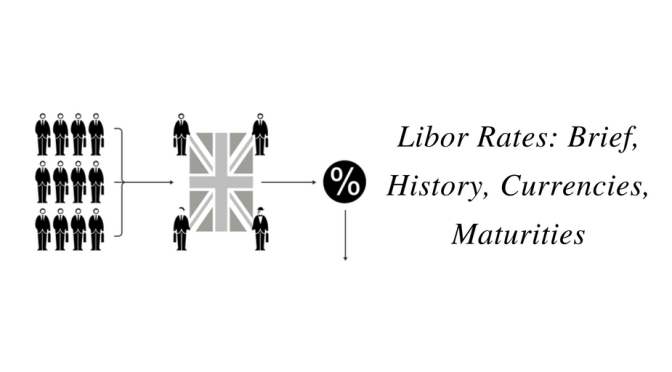Post below article there has been change in Libor Guidelines. Refer article “Impact of Libor Review on Trade Finance in India” & “Pushing the reset button on LIBOR – Speech by Martin Wheatley“
LIBOR in brief
LIBOR stands for London InterBank Offered Rate. LIBOR is an indicative average interest rate at which a selection of banks (the panel banks) are prepared to lend one another unsecured funds on the London money market. Although reference is often made to the LIBOR interest rate, there are actually 37 different LIBOR interest rates. LIBOR is calculated for 7 different maturities and for 5 different currencies. The official LIBOR interest rates (bbalibor) are announced once a day at around 11:45 a.m. London time by Thomson Reuters on behalf of the British Bankers’ Association (BBA).
The Creation of LIBOR
At the start of the nineteen eighties there was a growing need amongst the financial institutions in London for a benchmark for lending rates. This benchmark was particularly needed in order to calculate prices for financial products such as interest swaps and options. Under the leadership of the BBA a number of steps were taken from 1984 onwards which led in 1986 to the publication of the first LIBOR interest rates (bbalibor).
LIBOR Panel Banks
As has already been indicated, LIBOR is an average interest rate at which a selection of banks will lend one another funds. These banks are called ‘panel banks’. The selection is made every year by the British Bankers’ Association (BBA) with assistance from the Foreign Exchange and Money Markets Committee (FX&MMC). A panel is made up for each currency consisting of at least 8 and a maximum of 16 banks which are deemed to be representative for the London money market. Banks are assessed on market volume, reputation and assumed knowledge of the currency concerned. Because the criteria applied are strict, the rates can generally be considered to be the lowest interbank lending rates on the London money market.
LIBOR Calculation Method
The LIBOR interest rates are not based on actual transactions. On every working day at around 11 a.m. (London time) the panel banks inform Thomson Reuters for each maturity at what interest rate they would expect to be able to raise a substantial loan in the interbank money market at that moment. The reason that the measurement is not based on actual transactions is because not every bank borrows substantial amounts for each maturity every day. Once Thomson Reuters has collected the rates from all panel banks, the highest and lowest 25% of value are eliminated. An average is calculated of the 50% remaining ‘mid values’ in order to produce the official LIBOR (bbalibor) rate.
The Significance of the LIBOR Interest Rates
LIBOR is viewed as the most important benchmark in the world for short-term interest rates. On the professional financial markets LIBOR is used as the base rate for a large number of financial products such as futures, options and swaps. Banks also use the LIBOR interest rates as the base rate when setting the interest rates for loans, savings and mortgages. The fact that LIBOR is often treated as the base rate for other products is the reason why LIBOR interest rates are monitored with great interest by a large number of professionals and private individuals worldwide.
LIBOR Currencies
Originally (in 1986) LIBOR was published for 3 currencies: the US dollar, the pound sterling and the Japanese yen. Over the years that followed the number of LIBOR currencies grew to a maximum of 16. A number of these currencies merged into the euro in 2000. At the moment we have LIBOR rates in the following 5 currencies (click on the currency for the current interest rate for each maturity):
- American dollar – USD LIBOR
- British pound sterling – GBP LIBOR
- European euro – EUR LIBOR
- Japanese yen – JPY LIBOR
- Swiss franc – CHF LIBOR
LIBOR Maturities
Because there are 7 different maturities there are 7 different LIBOR rates in total. There have not always been 7 maturities. Up until 1998 the shortest maturity was 1 month. In 1998 the 1 week rate was added, and only in 2001 were the overnight and 2 week LIBOR rates introduced. In 2013 various currencies and maturuies were removed.
- LIBOR – overnight
- LIBOR – 1 week
- LIBOR – 1 month
- LIBOR – 2 months
- LIBOR – 3 months
- LIBOR – 6 months
- LIBOR – 12 months
